Estimated reading time: 12 minutes
When it comes to gardening, many of us stick with what we know. We tend to grow the plants we’ve had success with in the past. And that makes sense because those are typically are the ones best suited to our climate and soil.
However, sometimes the reason is that we fall back on the familiar – the plants that most people grow. When it comes to edible plants for your home garden, that often means lettuce, beans, tomatoes, strawberries, and squash.
But what about shaking things up this year? There are many edible plants that will add interest and color to your garden and your table. Here’s a list of 21 unusual edible plants for your garden. We’ve included a brief description and a link or two for more information on each one.
Want to save this post for later? Click here to Pin It On Pinterest!
1. Amaranth
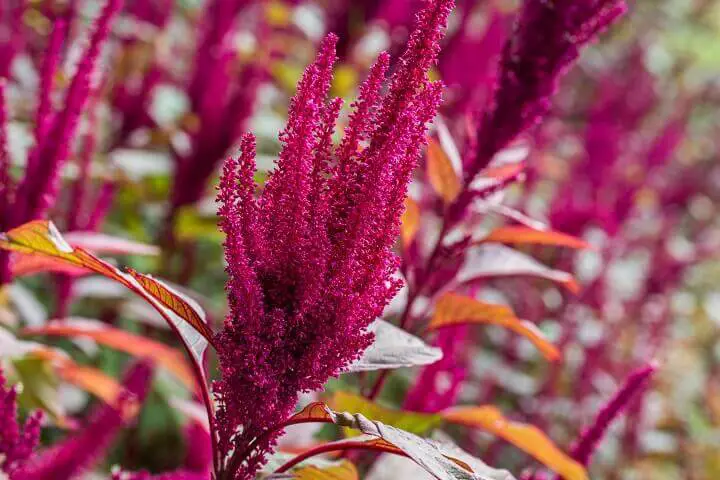
Amaranth has an ancient history in the Americas as a protein-rich grain that can be ground into flour, flaked as a cereal, and even popped like popcorn. Amarnath greens are also edible and have a taste that is similar to spinach. Amaranth varies in color from bright green to bright red or purple.
For more on growing amaranth, here’s an article and a video.
2. Calabash
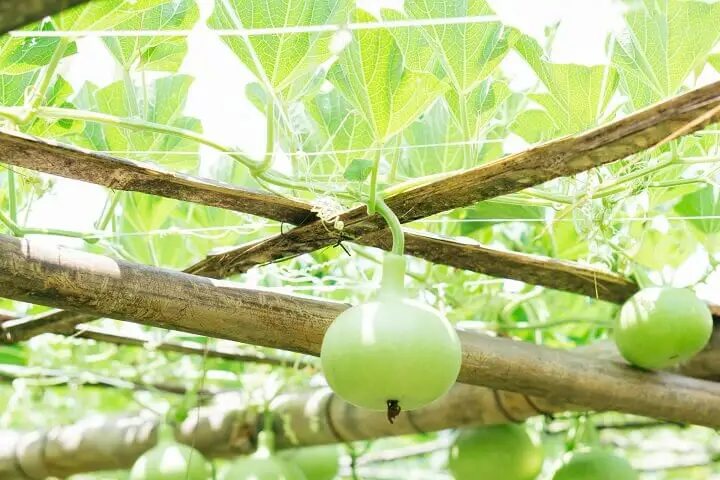
Also known by a variety of other names, such as bottle gourd and long melon, calabash is a vining plant in the squash family. It produces a bottle-shaped gourd that has a mild, somewhat sweet taste.
Here is a growing guide for calabash.
3. Kiwano
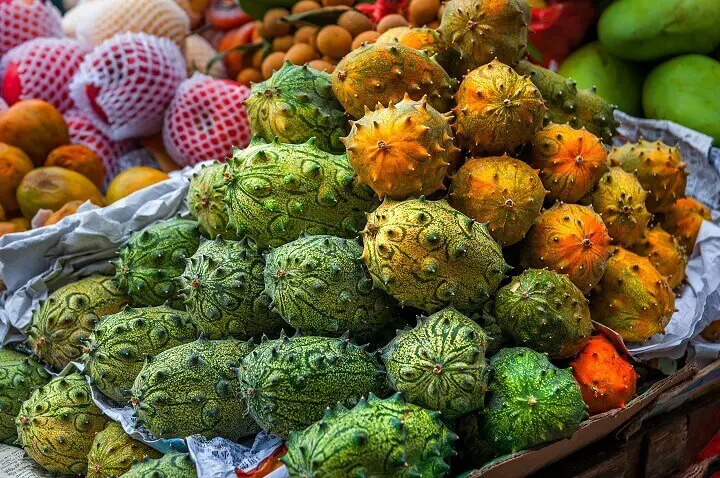
With its spiky exterior, the kiwano looks like it comes from another planet. However, this exotic fruit has a mild flavor that some people describe as a cross between a cucumber and a kiwi. Others say that a ripe kiwano tastes like a banana. Either way, this plant will definitely add interest to your edible garden.
Here’s the information you need to know.
4. Achocha
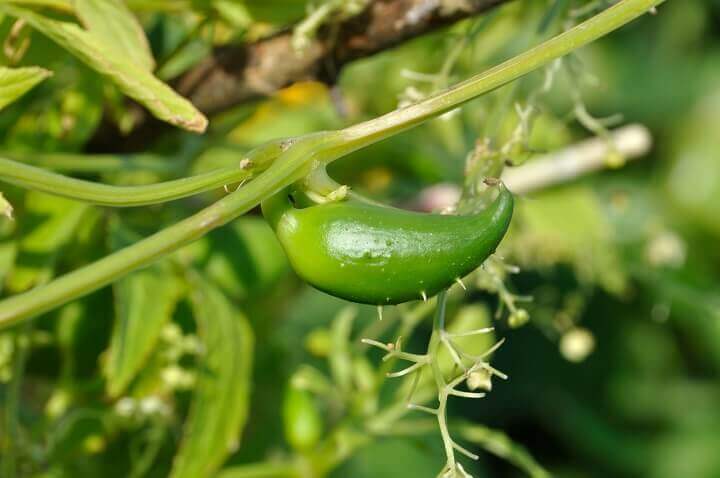
Often called “fat babies,” the achocha is a vining plant that produces mild fruit that can be stuffed, stir-fried, sautéed, or baked. An immature fruit tastes similar to a cucumber, and mature fruit is more like a bell pepper in flavor.
This article explains how to grow achocha.
5. Black Nebula Carrot
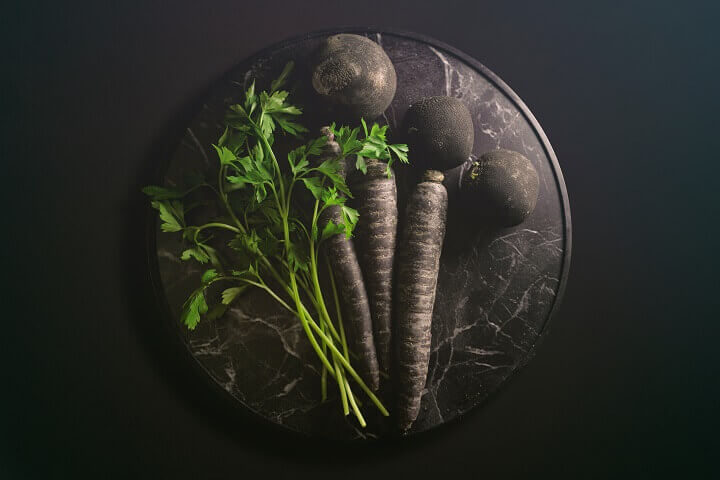
This carrot is a dark, rich purple that can appear black, but you’ll find a white center when you cut into it. It tastes delicious, both raw and cooked, and the stunning color brings extra nutrition and antioxidants. Bonus: This carrot is surprisingly heat-tolerant.
Here is a growing guide for this unique carrot.
6. Kohlrabi
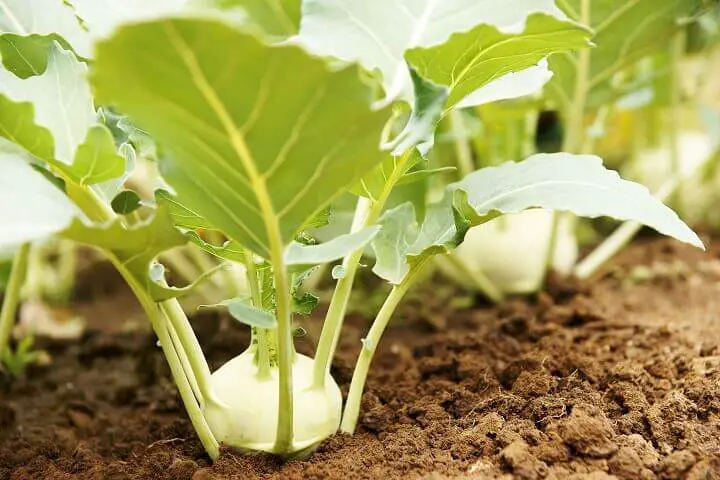
This unusual vegetable has a sweet, cabbage-like taste. You can eat it raw or cook it in savory dishes. Also called a turnip cabbage or a German turnip, kohlrabi is a cruciferous vegetable with thick skin that can vary in color from light green to deep purple. The inside is always a pale yellow.
Here’s an article on how to grow kohlrabi, and here’s one on how to cook it.
7. Quince
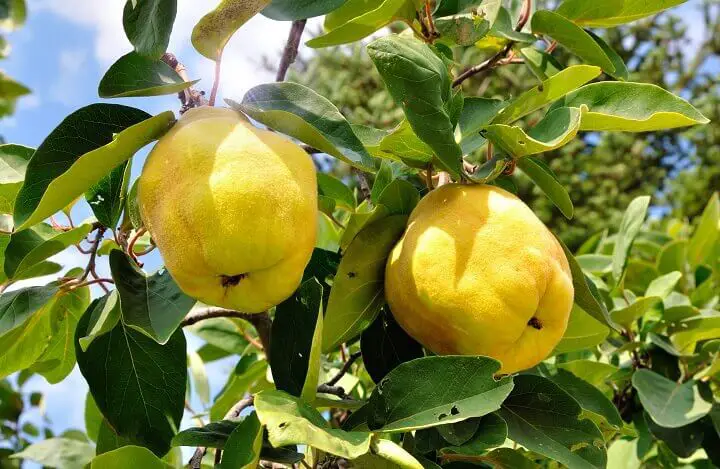
Although they take more tending than apple or pear trees, quince trees produce a tasty fruit that is used throughout much of the world in pies, jams, and pastries.
This article describes how to grow quince trees, and this video shows a quince tree as the centerpiece of a permaculture garden.
8. Cape Gooseberry
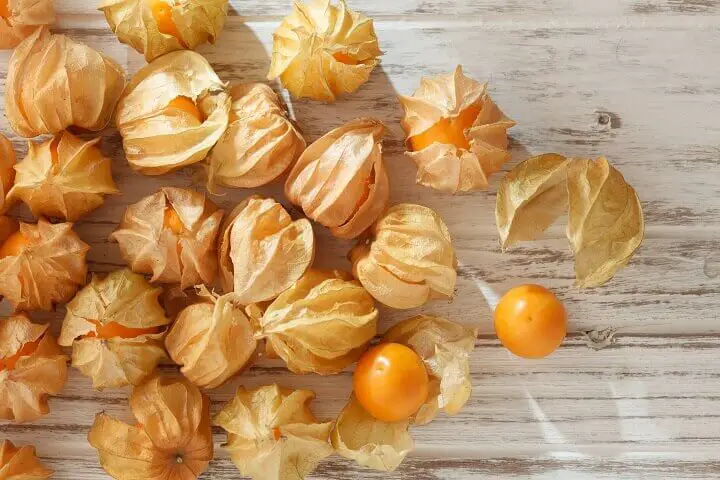
Also known as the ground cherry or goldenberry, cape gooseberries look a little like yellow cherry tomatoes. They feature a unique papery wrapping and have a mild, sweet flavor.
Here’s an article that shares growing information and tips for cape gooseberries.
9. Chioggia Beet
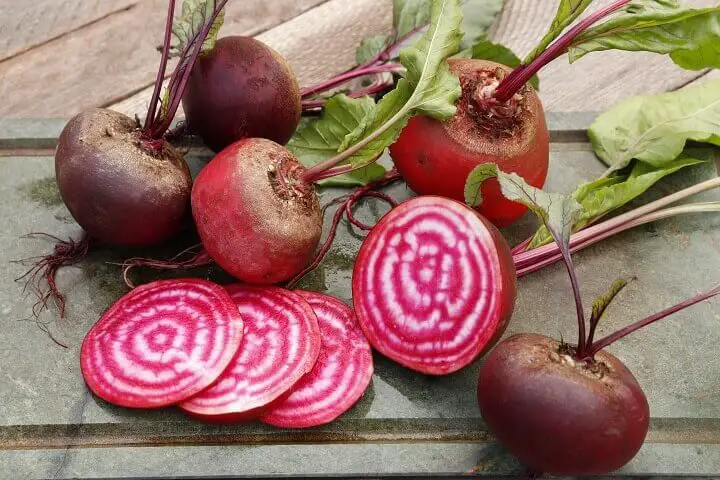
This mild-tasting beet has bright red and white striped flesh that looks striking in a salad.
Check out this article for details on growing these unusual beets. And here’s a short video that captures its distinctive appearance.
10. Cattails
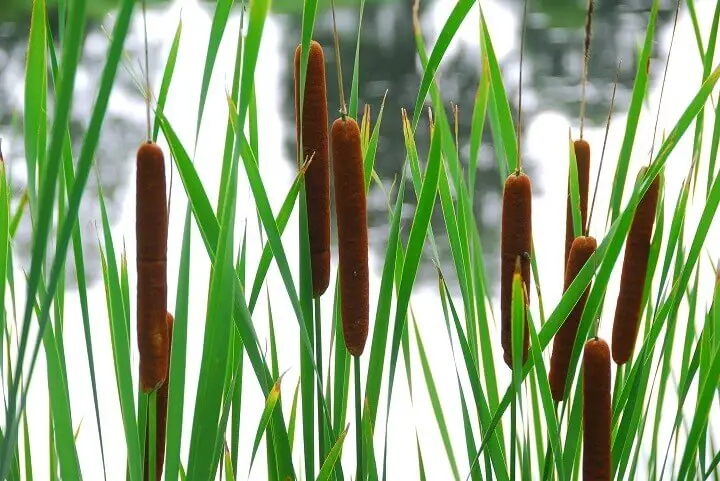
You’ve seen cattails growing by ponds and streams, but did you know they are edible? Maybe it’s time to introduce them to your landscape. Young cattail shoots can be roasted or grilled as you would asparagus. And you can use cattail pollen as a type of flour or as a sauce or soup thickening agent.
Here’s how to grow and care for cattails, and here are some cooking ideas and recipes.
11. Pineberries
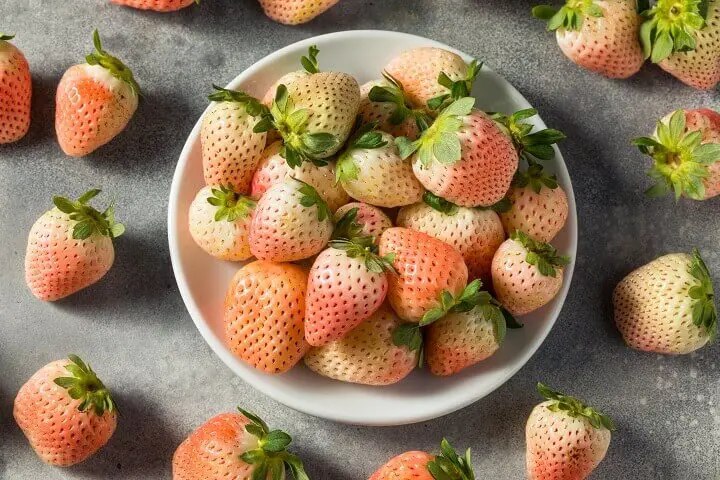
Also called white strawberries, pineberries taste like a cross between a pineapple and a strawberry (hence their name). You can eat them whole or slice them up, but keep in mind that they are extremely perishable.
Here are some growing tips for this strange fruit.
12. Glass Gem Corn
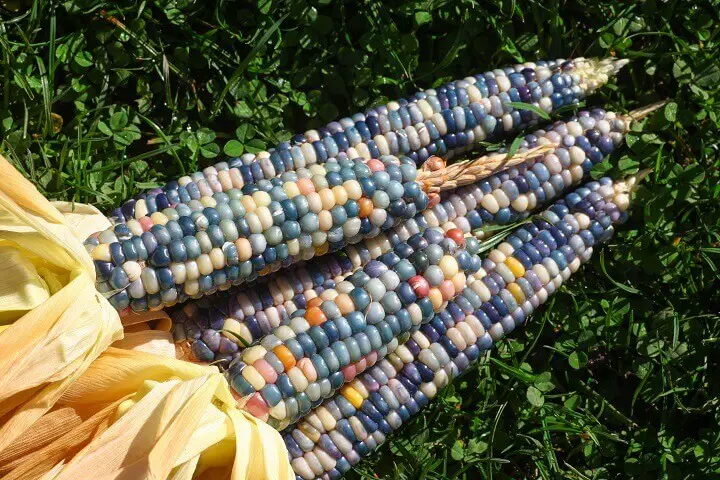
Although you may be attracted to this rainbow-colored corn for its beautiful appearance, glass gem corn can be popped as popcorn or dried to make flour.
Here’s what you need to know to grow and harvest these gems.
13. Wonderberry
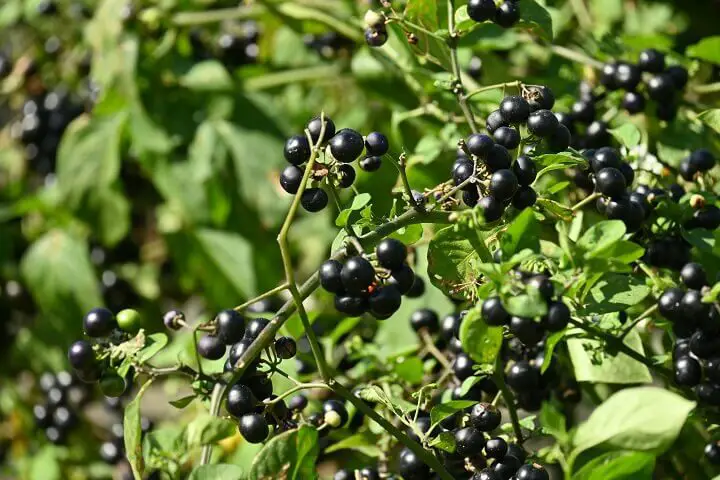
A member of the nightshade family, wonderberries are small, dark blue berries that you can eat right off the vine or bake into muffins or pies. Also called sunberries, wonderberries also make a great jam. The best part? These bushy plants require little care.
Here’s what you need to know to grow wonderberries. (Note: only eat ripe wonderberries.)
14. Cucamelons
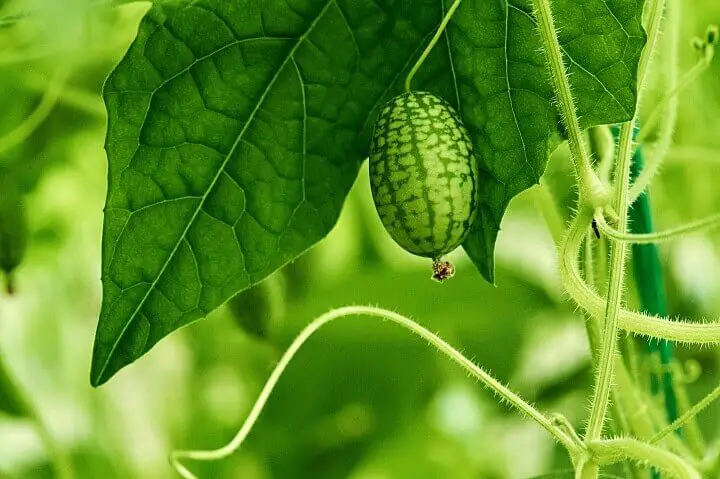
Also called mouse melons, cucamelons are the fruit of a vining plant that is easy to grow. And yes, the name makes sense. The fruit looks like little watermelons and tastes a little like a cucumber.
Here are the details on how to grow cucamelons in your garden.
15. Romanesco Broccoli

This strange-looking broccoli has colorful swirls, spikes, spirals, and patterns that will make you want to admire it, not eat it. But it’s as easy to grow, harvest, and prepare as other forms of broccoli and cauliflower.
Check out this video to get a close look at this unusual vegetable. And here are some how-tos.
16. Dragon Tongue Beans
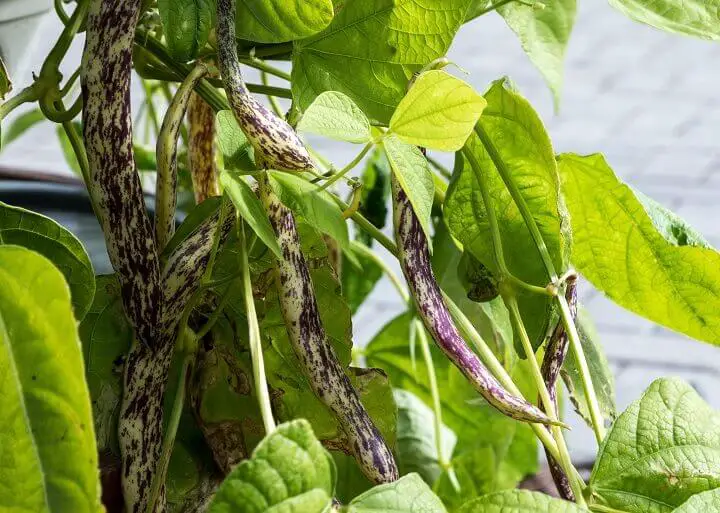
If you have kids, how can you not grow something called Dragon Tongue Beans? This other-world-looking bush bean variety boasts long, yellow pods that are streaked with purple. You can eat these tasty beans raw (like a snap pea) or cook them however you like to prepare green beans.
This video gives you a close-up look at these beans that you can pack into a small space. And this article provides more of what you need to know to add these plants to your edible garden.
17. Autumn Star Kalettes

Think of these beauties as a cross between kale and Brussels sprouts. The “florets” are milder-tasting than either, but they offer the deep color and rich nutrient content of both.
Here’s a link to an article and video that shares what you need to know to add this hybrid to your garden.
18. Maypop

If you’ve been on a tropical vacation, you may have fallen in love with passion fruit. The trouble is, passion fruit is hard to grow in much of the U.S. Here’s the alternative you’ve been seeking.
The maypop is a herbaceous vining plant that produces a large, yellow-orange berry with an edible pulp. The plant’s name comes from the popping sound that happens when the fruit is crushed.
Here’s more information on the maypop.
19. Haskap
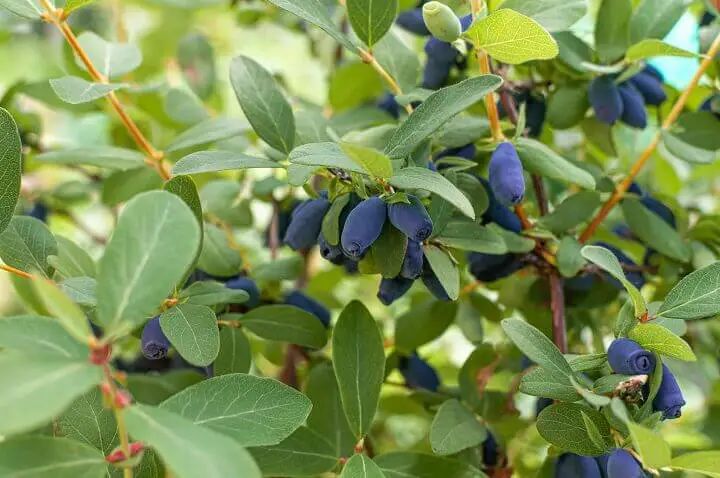
A member of the honeysuckle family, the haskap (also called honeyberry) produces a berry that tastes like a cross between a raspberry, a blueberry, and an elderberry. As you can imagine, these dark berries are rich in vitamins and antioxidants. You’ll also love the unusual trumpet-shaped blooms the plant produces.
This article shares growing tips, and here’s a video that demonstrates the process.
20. Medlar
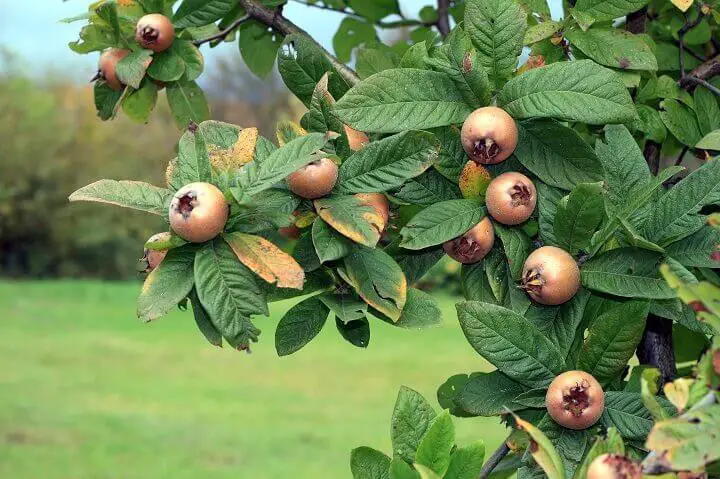
Cultivated since Ancient Roman times, the medlar is a fruit that grows on a small deciduous tree. When you see a medlar tree, you won’t be surprised to learn that it is a member of the rose family. The fruit looks a lot like a large rose hip. Some people compare the fruit’s taste to similar to an over-ripe date or even to apple butter. It’s rich in Vitamin C.
You’ll want to read this article for information on growing medlar.
21. Serviceberry
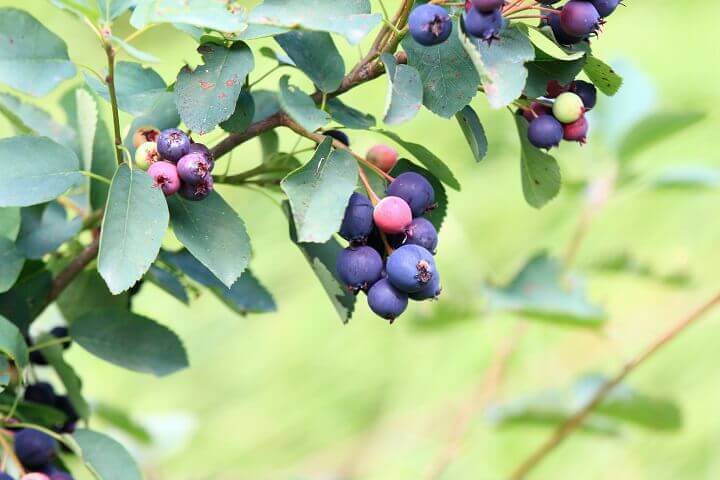
We’ll close our list with one more unusual berry, the serviceberry. Despite its decidedly uncatchy name, the serviceberry is a lovely flowering tree that produces clusters of tasty berries. You can eat them as is or use them in jams or jellies. (However, you’ll have your hands full keeping the local birds from gobbling them up first.)
Learn more about the serviceberry here, and here’s a video so you can get a good look at it.
Conclusion
We hope you’ve enjoyed learning a little about some of these unusual edible plants. If you’d like to learn more, here are a few interesting books on this topic that you may want to check out.
- Veggie Garden Remix by Niki Jabbour
- Your Edible Yard by Crystal Stevens
- Grow Something Different to Eat by Matthew Biggs
- Foodscaping by Charlie Nardozzi
Like this post? Don't Forget to Pin It On Pinterest!
You May Also Like:

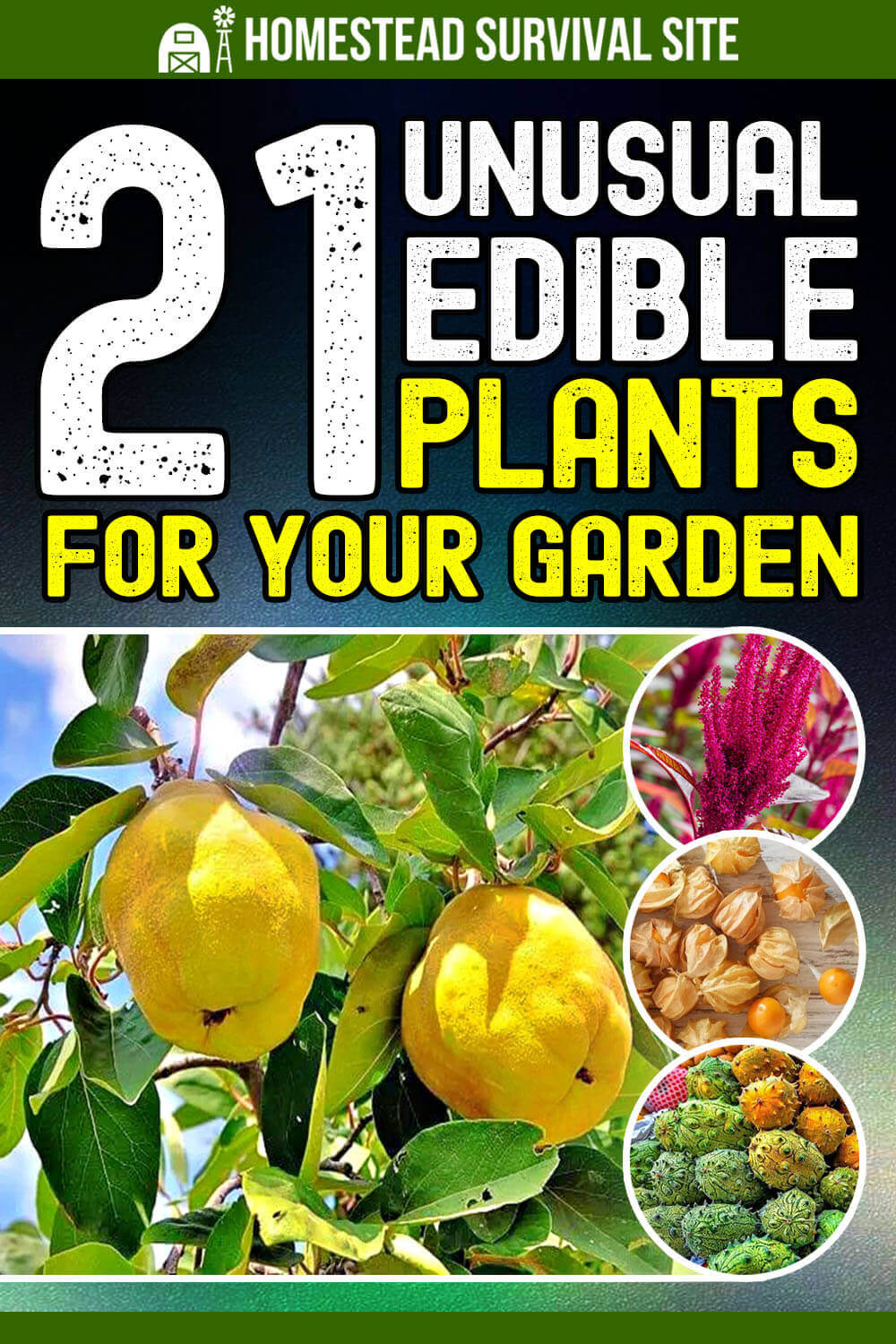


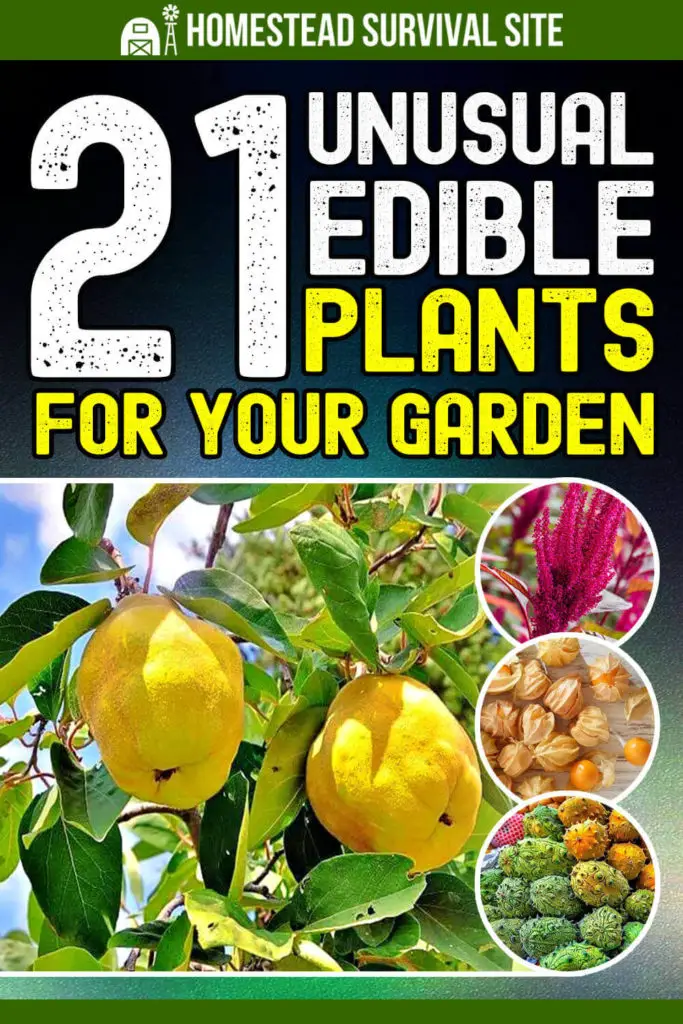








Hello, I thank you for your good site, which I read with great interest and it has been used by me. I am applying to receive plants that have the elements in them or their analysis.
Thank you Berahmand